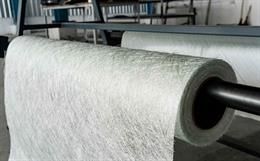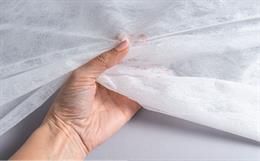Thefirst Friday each month creates enormous buzz and anxiety in the United States. This is the day, when the U.S. government's Department of Labor puts out itsmonthly job report. September's job report in the U.S. presented a gloomypicture with a net 95,000 job loss. The U.S. economy is a good barometer forthe global economy. Emerging economies such as China and India are dependent on the economies of developed nations, more importantly, the United States. The U.S. is the 700 pound gorilla, which influences the economy, politicsand the well being of the globe. For example, as the saying goes, even theCanadian economy is dependent on the U.S. economy. The U.S. consumers are the biggest buyers of commodity items from a number of countriesincluding the world's second largest economy-China. This spurs growth inexporting countries by providing jobs that create positive ripple effects inthese exporting countries.
EmergingEconomies Connected with the Developed World
Althoughit is well understood that the economies of nations are interconnected, textiletrade is a clear example to showcase how different nations are joined at theirhips. Cotton from the United States; say West Texas is shipped to China, which is the largest importer. The textile products made in China and other low wage countries such as India, Bangladesh, Indonesia, Vietnam and Sri Lanka get sold in the U.K., mainland Europe and U.S.A. in retail outlets such as Marks &Spencer, J C. Penney, Target, Wal Mart, etc. Every country has its own competitiveadvantage, which plays its own part in the global market place. However,certain countries have edge in certain products due to its scale of production,favorable trade status, labor cost, productivity and logistics andinfrastructural advantages. This is clearly evident from the competition India receives in its apparel exports from smaller economies such as Sri Lanka and Bangladesh. Overall, in terms of commodity products, China dominates all other exportingnations.
TechnicalTextiles Are Becoming Essential Textile Items
Forthe past 14 months in a row, the unemployment rate in the U.S., lingers around 9.5%. The September's unemployment percentage was 9.6%, with a net jobloss. Why is this number important? Textiles products, which India and China export such as garments, home textiles, etc., are all driven by good economic condition.As these are not life saving and life sustaining products such as food andmedicines, as the jobless rate increases and household income drops, there willbe a dip in the consumption of these items. This is clearly evident from theslow movement of these items in retail outlets compared to hygiene and medicaltextiles. Items such as baby diapers, adult diapers, feminine care products,consumer wipes and even pet care products move faster than undergarments andcasual wear items. These products now fall in the category of essentialday-to-day textile products which have in a way become recession proof. Anaverage citizen (Aam Admi) is compelled to buy these products along with foodand medicines. However, commodity items such as pyjamas are not fast movingitems and are affected by the economic slump. This is what is happening indeveloped economies. People are reluctant to buy the seven pieces per packMainstay's kitchen towel set for three dollars sold in Wal Mart stores.However, they will buy baby diapers and baby wipes!
Howserious is the China Currency Situation?
Afew economists have gone public in the United States and have criticized thenegative impact of the under-valued Chinese Yuan. They have argued that ChineseYuan is also an important reason for the long recession in the United States. President Obama has also expressed his unhappiness on this situation whichprompted a response from the Chinese premier Wen Jiabao. Many pundits, U.S. politicians and economists are making clarion calls to the Chinese government to raiseYuan's value by at least 20%.
Recently, before the U.S. House of Representatives adjourned for mid-term elections, they passed a bill to enforce tariffs on Chinese products to put pressure on the Chinese government to appreciate Yuans value. Earlier, the Chinese Premier Wen Jiabao while attending the United Nation's annual meeting defended his governments policy to keep its currency at its current rate to avoid social unrest and save millions of jobs. Some critics feel Chinese exports are at high levels only due to under-valued Chinese currency. This is the reason; western retail outlets are flooded with cheap Chinese goods that are affordable to working and middle class population in the west. Whether it is Loblaws retail store in Toronto, Canada or J.C. Penney in South Plains of Lubbock, USA, Chinese products ranging from nanoceramic coated nonstick pans to textile items occupy a number of shelves. Given the volume and the pricing, it is difficult to compete with China in commodity textile items.
Consumer Demand and the Textile Industry
Recently, I hosted a group of cotton and textile industry leaders from India, Pakistan, Australia and USA. This group visited my Nonwovens and Advanced Materials Laboratory at Texas Tech University in Lubbock, USA. Casual discussions with these leaders gave a clear albeit simple understanding of the textile trade around the world and how the United States influences it. One leader pointed out that India can compete in niche and fashion textile items and not in mass produced items. Two senior leaders having seen the City of Lubbock with a population of 2.17 lakh, made a few interesting remarks, which will be of interest to the textile industry. One leader pointed out that for such a small city, it is amazing to see such an infrastructure and a number of retail outlets. Lubbock has four Wal Mart stores and a string of United Supermarket stores. These basically drum up the consumer demand and sales. The other industry leader from India pointed out that the United States is built on its domestic consumption unlike China. Although Americans have started saving, an important lesson is that consumer spending is the key to economic growth. Boosting domestic consumption enhances the economy. This is not the case with China which is basically dependent on its export of low-value items. In a recent interview on Charlie Rose's show, U.S. Treasury Secretary, Timothy Geithner remarked that China has to increase its domestic consumption to support its economic growth. This means new products that can cater to the needs of growing middle class population have to be produced and sold. Technical textile products such as geotextiles, hygiene and medical textiles will be consumed in growing economies such as China, Brazil, India, South Africa, Turkey, Columbia, Egypt, Indonesia, Vietnam and Russia.
Growing Technical Textiles Sector in India
Given the global economic situation, changing nature of consumer spending in developed economies, severe budget shortfalls in wealthy nations such as the U.K. and U.S.A., it is important for emerging economies like India to boost the consumption of items such as technical textiles. India needs a thriving converting sector which can develop usable technical textiles products. It is necessary to have a public-private partnership to create a dynamic converting sector for the technical textiles sector in India. This will certainly be a job creation platform for the Indian textile industry.
The author is associated with Nonwovens & Advanced Materials Laboratory, Texas Tech University, USA
Views presented here are those of the author.
Image courtesy:
http://palmhive.co.uk







